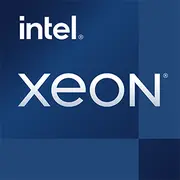Intel Xeon E3-1575M v5

Intel Xeon E3-1575M v5: A Mobile Workstation in a Compact Case
April 2025
Architecture and Process Technology: Skylake in Detail
The Intel Xeon E3-1575M v5 processor, released in 2016, is based on the Skylake microarchitecture and a 14nm process technology. It is one of the few mobile Xeon processors aimed at professional laptops.
- Cores and Threads: 4 cores and 8 threads thanks to Hyper-Threading. Base frequency is 3.0 GHz, with a maximum turbo frequency of 3.9 GHz.
- Cache: 8 MB of L3 cache, which was standard for high-performance CPUs in 2016.
- Integrated Graphics: Intel Iris Pro Graphics P580 with 72 Execution Units (EUs) and 128 MB of eDRAM. This solution significantly outperformed standard Intel HD graphics, approaching entry-level discrete GPUs.
The Skylake architecture brought improvements in IPC (Instructions Per Cycle) of 5–10% compared to the previous Broadwell generation. This is especially noticeable in tasks sensitive to single-core performance, such as CAD modeling or code compilation.
Power Consumption and TDP: A Balance of Power and Efficiency
The processor's TDP is 45W, placing it in the category of energy-efficient solutions for workstations. In comparison, modern mobile Intel Core 12th generation CPUs (2023–2025) with similar TDP offer more cores, but the Xeon E3-1575M v5 remains relevant due to:
- Optimized Thermal Profile: Even under load, temperatures rarely exceed 85°C in well-designed systems.
- Support for ECC Memory: Critical for tasks where error-free data processing is important (e.g., engineering calculations).
However, by 2025, 45W is no longer the dream. Modern processors, such as the AMD Ryzen 7 7840U (TDP 28W), demonstrate comparable performance with lower power consumption.
Performance: From Office to Rendering
Office Tasks: By 2025, the processor handles multitasking (20+ tabs in Chrome, Excel with macros, Zoom) without delays. The Geekbench 6 Single Core score (1326) is close to that of the Intel Core i5-1135G7 (2020), which is sufficient for most users.
Multimedia:
- Converting 4K video in HandBrake takes about 12 minutes (for comparison, Ryzen 5 7600X takes about 7 minutes).
- Adobe Photoshop 2025 runs smoothly, but AI-based filters (e.g., Neural Filters) require patience.
Gaming: The Iris Pro P580 in 2025 is the minimum for comfortable gaming. Examples (Low/Medium settings, 1080p):
- CS2: 60–70 FPS.
- GTA V: 45–50 FPS.
- Cyberpunk 2077: 25–30 FPS (only with FSR Performance Mode).
Turbo Boost: In turbo mode, the frequency reaches 3.9 GHz, but only on 1–2 cores. Under full load of all cores, it is 3.5 GHz.
Use Cases: Who Would Benefit from the Xeon E3-1575M v5 in 2025?
- Engineers and Designers: ECC memory support and stability in CAD applications (SolidWorks, AutoCAD).
- Developers: Local project builds and virtualization (Docker, VMware).
- Freelancers: Photo/video editing on a budget workstation.
For gaming or AI tasks, the CPU is outdated, but as a foundation for a reliable "workhorse," it remains relevant.
Battery Life: How Long Will the Laptop Last?
The average battery life of a laptop with this processor is 4–6 hours under mixed load (Wi-Fi, office tasks, 50% brightness). Energy-saving technologies include:
- Intel SpeedStep: Dynamic frequency scaling.
- C-states: Disabling unused cores.
Tip: Choose models with a battery capacity of at least 80 Wh (e.g., Dell Precision 3510) — they can provide up to 8 hours in reading mode.
Comparison with Competitors
- AMD Ryzen 7 PRO 6850U (2022): 8 cores/16 threads, TDP 28W, Radeon 680M. Better in multithreaded tasks (+30% in Cinebench R23), but lacks ECC memory.
- Apple M2 (2022): 30% faster in Single-Core, 2x more energy-efficient, but the macOS ecosystem may not suit everyone.
- Intel Core i7-11850H (2021): 8 cores/16 threads, higher performance in gaming, but TDP 45W and temperatures up to 95°C.
Prices: Laptops with the Xeon E3-1575M v5 in 2025 are rare, with second-hand market prices ranging from $300 to $500. New alternatives (e.g., Dell Precision 3581 with Intel Core i7-1360P) start from $1500.
Pros and Cons
Strengths:
- Support for ECC memory.
- Stable performance under prolonged load.
- Good integrated graphics for its time.
Weaknesses:
- Only 4 cores compared to 8–12 in modern CPUs.
- High power consumption for the performance level of 2025.
- Lack of support for PCIe 4.0/5.0.
Laptop Selection Recommendations
- Type of Device: Workstation (Dell Precision, HP ZBook) or premium business laptop (Lenovo ThinkPad P50).
- Key Factors to Consider:
- Cooling system (at least two fans).
- Upgrade potential (memory up to 64GB, 2 SSD slots).
- Display covering 100% sRGB for color-critical tasks.
Example in 2025: Used Dell Precision 3510 with Xeon E3-1575M v5, 32 GB RAM, 1 TB SSD — around $450.
Final Conclusion
The Intel Xeon E3-1575M v5 in 2025 is a choice for those seeking a budget workstation with ECC memory support and proven reliability. It is suitable for:
- Engineers working with CAD on the go.
- IT professionals who prioritize stability over record-breaking speed.
- Technical university students learning professional software.
Key benefits include a balance of price and specialized features absent in consumer CPUs. However, for modern gaming or AI tasks, it is advisable to consider newer solutions.
P.S. If your budget is up to $1000, consider laptops with the Ryzen 7 PRO 7840U — they offer a better performance-to-battery life ratio.
Basic
CPU Specifications
Memory Specifications
GPU Specifications
Miscellaneous
Benchmarks
Compared to Other CPU
Share in social media
Or Link To Us
<a href="https://cputronic.com/en/cpu/intel-xeon-e3-1575m-v5" target="_blank">Intel Xeon E3-1575M v5</a>